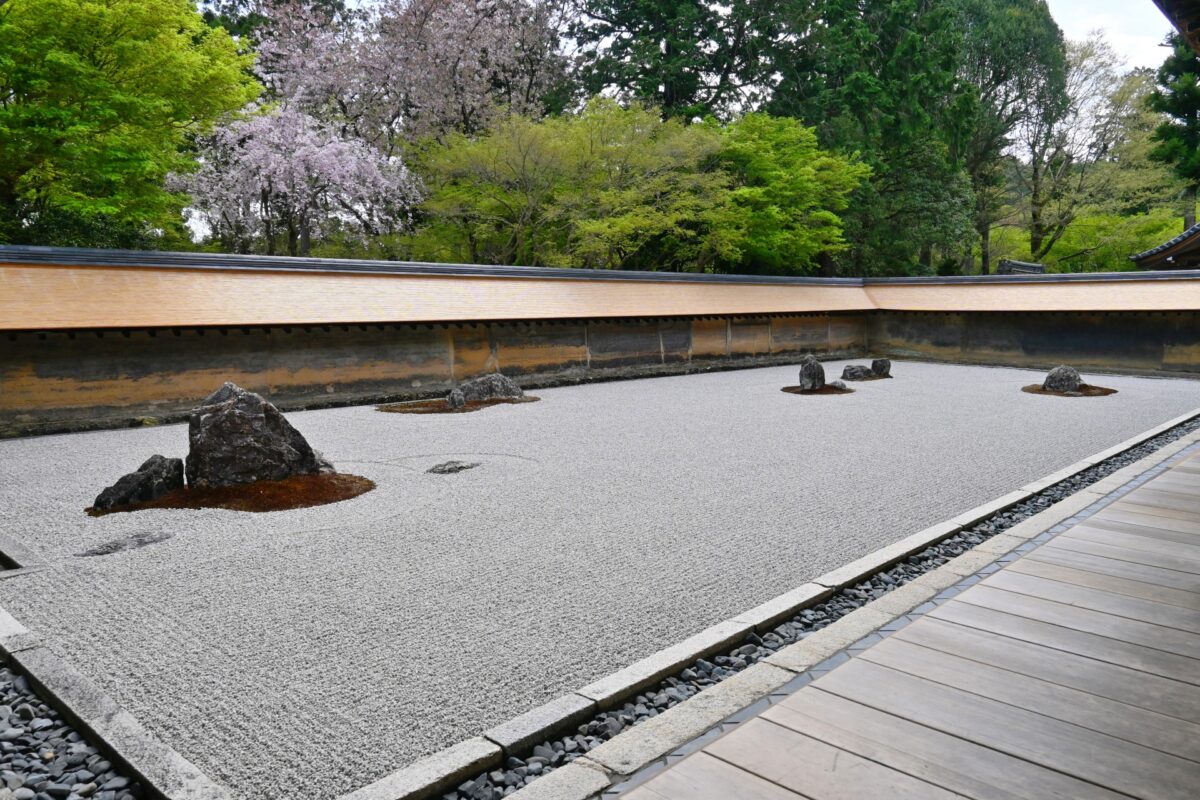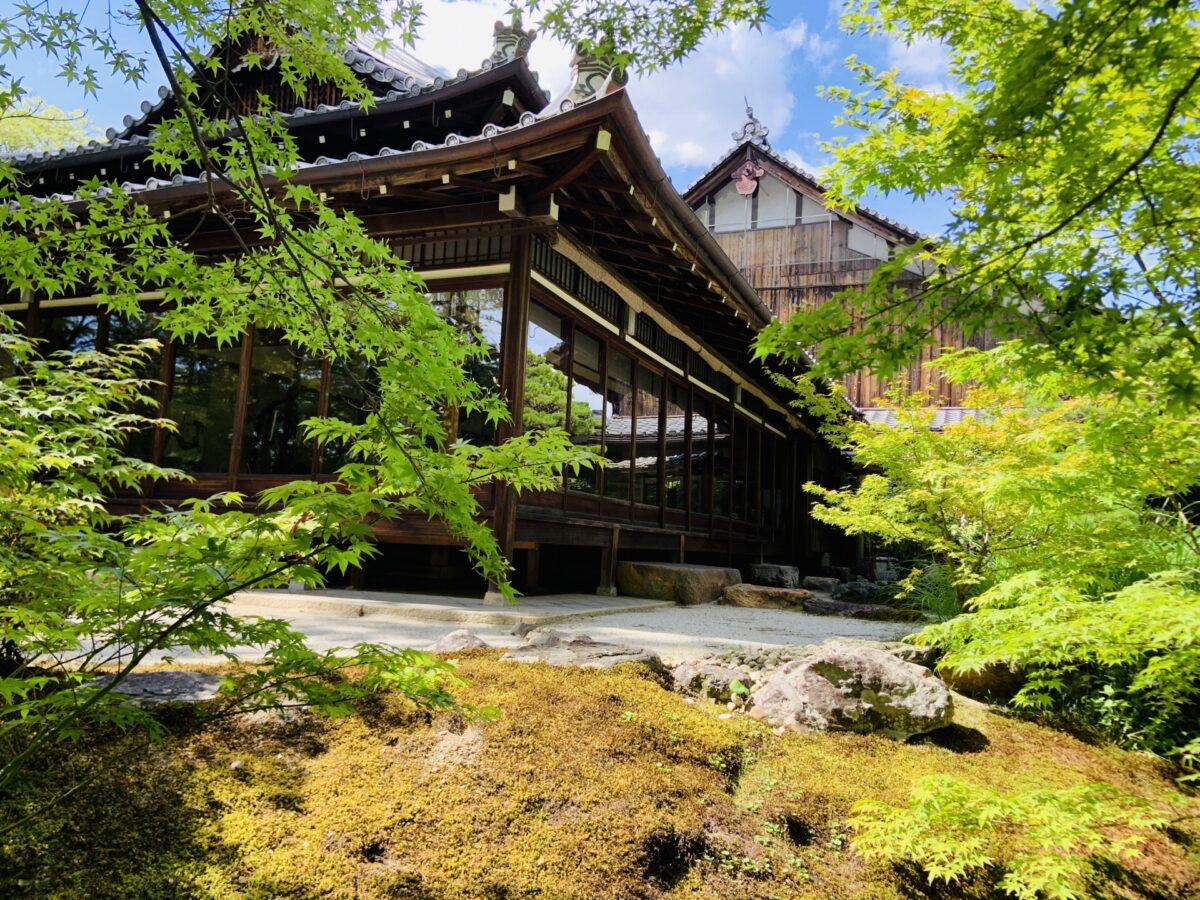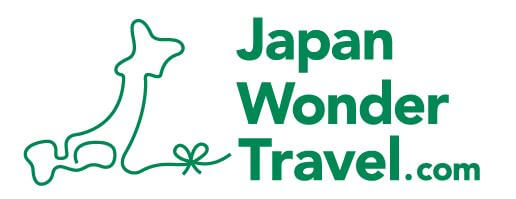
Misty Fujii is a Canadian DJ and writer who came to Japan seeking adventure and stuck around for love. Living life as a bucket list in progress, she’s as passionate about sharing her stories as she is experiencing them. She gets excited about collecting vintage vinyl records, food from all countries, traveling, and renovating her traditional Japanese house. She can be found on Instagram @djmisty
This post may contain some affiliate links. When you click through and make a purchase we may receive some commission, at no extra cost to you.
Kyoto is where ancient serenity awaits! Prepare to be awed by the captivating blend of history and spirituality at Kyoto’s temples. From the iconic golden splendor of Kinkakuji to the tranquil Zen gardens of Ryoanji, each temple is a masterpiece of architecture and culture. Meander through the grounds of the silver pavilion at Ginkakuji or find inner peace at Kiyomizu-dera’s wooden terrace overlooking the city. Kyoto’s temples offer a window into Japan’s rich past and a chance to connect with your inner zen amidst the bustling cityscape.
With so many temples in this legendary prefecture, let’s check out the 10 best temples to visit in Kyoto.
Special offer going on now!

If you love visiting temples, then we’ve got a great limited time opportunity you need to check out! You won’t want to miss it this Spring season.
If you’re a huge fan of Japan’s incredible display of cherry blossoms, known in Japanese as “sakura,” then you’re in luck! A handful of temples in Kyoto are offering a special chance to enter the grounds before operating hours to see the beautiful foliage. This is the perfect opportunity to see the temples in their glory as well as avoid potentially dense crowds as the spots are limited. The luxurious Kyoto Brighton Hotel line offers these immaculate experiences for those staying at the hotel as an add on to the room fee, but can also be reserved as a package initially. The event operates from the 29th of March until the 8th of April!
For all the specifics, be sure to visit their official site and make your reservation while you can!
1. Kiyomizudera Temple

Kiyomizudera Temple, founded in 778, sits in Kyoto’s Higashiyama district and has been a UNESCO World Heritage Site since 1994. This iconic hillside temple offers stunning views of cherry blossoms in spring and vibrant foliage in fall. Its remarkable wooden structure, supported by nail-free pillars, is a wonder.
Stand on the Kiyomizu Stage, extending over the valley, for a samurai-worthy thrill and capture unforgettable panoramas. With its allure and historical importance, Kiyomizudera Temple is a top pick in Kyoto and a must-see for travelers exploring the city’s ancient heritage.
Take bus 100 or 206 from Kyoto Station to Gojo-zaka or Kiyomizu-michi stop. Then, it’s a 10-minute uphill stroll to Kiyomizudera. Or, a 20-minute walk from Kiyomizu-Gojo Station on the Keihan Railway Line.
Official website: https://kyoto.travel/en/shrine_temple/131.html
Open everyday: 6AM-6PM
Admission fee: ¥500
2. Kinkakuji

Kinkaku-Ji Temple is a UNESCO Heritage Site and a golden masterpiece. Evoking “peace on Earth,” its design is meticulous. Originally a shogun’s villa, it became a Zen temple cloaked in gold leaf. Rebuilt after arson in the ’50s, it boasts three unique floors: shinden, samurai, and zen. Kinkakuji’s reflection in the pond is pure magic, its allure gracing postcards. A link to Japan’s history, its design glows through seasons, from cherry blossoms to autumn hues. Experience its beauty, a pilgrimage into Kyoto’s heart, and a timeless cultural treasure.
Reach Kinkakuji from Kyoto Station via bus 101 or 205. Alternatively, use Karasuma Subway Line to Kitaoji, then taxi or bus (101, 102, 204, 205) to Kinkakuji.
Open everyday: 9AM-5PM
Admission fee: ¥500
Official website: https://www.shokoku-ji.jp/kinkakuji/
3. Ryoanji Temple and Rock Garden

Ryoanji Temple is where one of Japan’s most iconic rock gardens resides. Once an aristocrat’s villa in the Heian Period, it’s now a Zen temple belonging to the Myoshinji school. While the garden’s history and design remain mysteries, this only adds to the intrigue. Pebbles surround fifteen rocks and moss patches in a rectangle. Curiously, at least one rock is always hidden from view, no matter what angle you look from. What is the garden’s meaning? Whatever you think! It’s open to interpretation.
Reach Ryoanji from Kyoto Station by JR bus. Or take a 5-minute bus or 20-minute walk from Kinkakuji.
Official website: http://www.ryoanji.jp/
Open everyday: 8AM-5PM
Admisison fee: ¥600
4. Ginkakuji

Ginkakuji, the Silver Pavilion, nestled in Kyoto’s eastern mountains, exudes Zen tranquility. Originally a shogun’s retirement villa in 1482, it was modeled after Kinkakuji, the Golden Pavilion. Once the shogun’s art haven, it ignited the Higashiyama Culture, spreading tea ceremonies, noh theater, and more nationwide. Today, the grounds feature the Silver Pavilion, temple structures, moss, and sand gardens. Stroll the circular route, soaking in the serene atmosphere and cultural echoes. Fun fact: it’s not really silver, but its elegance rivals the moon’s glow on a quiet night.
Reach Ginkakuji from Kyoto Station by bus 5, 17, or 100. Or walk via Philosopher’s Path from Nanzenji in 30-45 minutes.
Official website: https://www.shokoku-ji.jp/ginkakuji/
Open everday: 8:30-5PM
Admission fee: ¥500
5. Nanzenji Temple

Nanzenji Temple, nestled at the foot of Kyoto’s Higashiyama mountains, is another Zen sanctuary. As a vital hub of Japanese Zen Buddhism, it boasts impressive grounds and various sub-temples, forming a vast spiritual haven. Originally Emperor Kameyama’s retreat, it transformed into a Zen temple in the 13th century.
Wander the serene compound, featuring a grand gate, tranquil pond-centered garden, and distinct sub-temples, each with its own allure. While the main grounds are free to explore, individual sub-temples and the Abbot’s Quarters have separate entrance fees. In autumn, the area transforms into a vivid canvas of red and orange, making it a prime spot for witnessing Kyoto’s enchanting fall foliage.
Nanzenji Temple is a 5-10 minute walk from Keage Subway (Tozai Line) or Nanzenji-Eikando-michi bus stop (Bus 5) near the Philosopher’s Path, linking Ginkakuji at the northern end.
Official website: https://nanzenji.or.jp/
Open everyday: 8:40AM-5PM
Admission fee: ¥400
6. Tenryuji Temple

Tenryuji Temple is the heart of Arashiyama’s splendor. It’s the star player among the city’s Zen temples and a revered UNESCO World Heritage Site. Acting as the epicenter of the Rinzai School of Zen Buddhism, Tenryuji was established in 1339 by shogun Ashikaga Takauji, dedicated to the late Emperor Go-Daigo. Takauji’s history with Go-Daigo went from camaraderie to conflict, and the temple served as a peace offering to the departed ruler.
While time and turmoil have taken their toll on the temple’s structures, its soulful garden, designed by the visionary Muso Soseki, remained unchanged. Crafted with artistry akin to his work in Kokedera and other revered temples, the garden embraces a serene pond encircled by stones, pines, and the enigmatic Arashiyama mountains. This haven, dreamed into reality by an Ashikaga, an emperor, and a Zen master, stands as a testament to the timelessness of Japan’s profound culture.
Tenryuji can be accessed by walking from Keifuku Arashiyama Station (Randen trains) or JR Saga-Arashiyama Station (Kyoto Station).
Official website: https://www.tenryuji.com/
Open everyday: 8:30AM-5PM
Admission fee: ¥800
7. Byodoin Temple

Byodoin Temple embodies Buddhist Pure Land architecture. Sprouting from a Fujiwara clan villa, this temple is a chapter in Japan’s architectural legacy. Initially crafted in 998 as a countryside getaway for power broker Fujiwara no Michinaga, it later transformed into a celestial temple under his son’s decree.
Constructed in 1053, you’ll recognize the ethereal phoenix Hall from the back of a 10-yen coin. Gaze upon its reflection in the serene pond – it’s as if this mythical bird is soaring above the earth. Inside, Amida Buddha catches the sun’s embrace, encircled by Bodhisattvas in harmonious poses. And within the Hosho-kan Museum, treasures await – the original temple bell, door paintings, and the twin phoenix roof adornments. Byodoin, a survivor of the Heian Period, is an open book to Japan’s enchanting history.
Byodoin is 10-15 minutes from JR Uji Station or Keihan Uji Station.
Official website: https://www.byodoin.or.jp/
Open everyday: 8:30AM-5:30PM
Admission fee: ¥700
8. Sanjusangendo Temple

This is Sanjusangendo, or as it’s affectionately called, the “Hall of Thirty-Three Intervals.” Nestled in eastern Kyoto, this temple is a 1000-army-strong ode to Kannon, the goddess of mercy. Established in 1164 and later reborn from the ashes of a fire, Sanjusangendo is more than meets the eye.
Its 120-meter frame earns it the title of Japan’s longest wooden structure. Imagine a grand assembly of 1000-armed Kannon statues flanked by 500 more on each side, standing in perfect symmetry. They create a spellbinding sight! The temple’s name arises from the 33 intervals between its support columns. Here, you don’t just witness history; you stand amidst it.
To get to Sanjusangendo, take bus 100, 206, or 208 from Kyoto Station, walk 5 minutes from Shichijo Station (Keihan Line), or 20 minutes from Kyoto Station.
Official website: http://www.sanjusangendo.jp/
Open everyday: 9AM-4PM
Admission fee: ¥600
9. Daitokuji Temple

Walls and all, the Daitokuji temple complex stands tall in the northern part of the city. Founded in 1315, it faced some fiery trials during the Onin War but emerged stronger thanks to a head priest named Ikkyū, a famous Zen monk and poet. This place isn’t just a temple; it’s a living legend, and it’s even been associated with the tea master, Sen no Rikyū, helping to shape the tea ceremony we know and love today.
Picture a sprawling Zen playground complete with a main temple and twenty-two sub-temples in their walled abodes. Inside, you’ll find Zen gardens, art, and relics that are like a treasure hunt for enlightenment seekers. Take advantage of the grand vermilion gate and peek inside the Buddha Hall; it’s not just for show.
To get to Daitokuji, take bus 101, 205, or 206 from Kyoto Station or Bus 9 from Kitaoji-Horikawa. Alternatively, you can take the Karasuma Subway Line to Kitaoji Station, plus a short bus ride or 15-minute walk.
Official website: https://daitokujidaijiin.com/
Open everyday: 10AM-4:30PM
Admission fee: free
10. Otagi Nenbutsu-ji Temple

Located in the western part of Kyoto, the Otagi Nenbutsu-ji Temple is a must-visit destination. Decorated with 1200 moss-covered arhat statues that cover the hillside around the temple grounds, this place is a sight to see. This unique temple is located in Arashiyama and is the perfect place to start your Kyoto itinerary. You can reach the bamboo forest, Togetsukyo Bridge, and the main Arashiyama area by a downhill walk through the Saga-Toriimoto preserved village streets. This beautiful temple can easily be reached by a 5-minute taxi ride from JR Saga-Arashiyama Station for approximately 1,500 yen, or a 25-minute bus ride from Arashiyama for about 230 yen per person. Feeling adventurous? You can try to hike from JR Saga-Arashiyama Station for free! It takes about 1 hour.
Official website: http://www.otagiji.com/
Open everyday: 9AM-4:15PM
Admission fee: ¥500
Where will you go during your trip to Kyoto? Why not book a knowledgeable guide who can make your trip more memorable?
Japan Wonder Travel Tours in Kyoto
When you are visiting Kyoto and you need some help organizing your trip, you came to the right place. We’re happy to help you make your trip to Kyoto the best trip ever. We can advise you on where to go or even better, show you around with a local, English speaking guide. Let us help you create safe, comfortable, and unforgettable memories in Kyoto!
▶Kyoto 8h Private Custom Highlight Tour with Licensed Guide
On this full-day private tour of Kyoto, you will be able to see the highlights of Kyoto in just one day and at the same time develop a deeper understanding of both the culture of the area and Japan as a whole.

▶Meet a Geisha in Kyoto: Guided Walk in Gion and Enchanted Time with Maiko
Meet a Maiko, a geisha in Kyoto, and enjoy a walking tour in Gion, the geisha district. See an authentic Japanese tradition unfold before your eyes that has existed for hundreds of years. You’ll have chance to take a photo with Geisha!

▶Explore Nishiki Market: Food & Culture Walk
If you’re looking to learn more about the culture and the local cuisine of Kyoto, this is the perfect tour for you! Take part in this Kyoto food and drink tour and explore the 400-year-old market and the famous surrounding areas.

▶Kimono Experience
Kyoto is the best city to explore in kimono, Japanese traditional clothing. You can choose the one you like the most from several patterns and colors at the rental shop. In Kyoto, two locations are both accessible from the main tourist attractions which makes it easy to try it on and explore the city for a day!

Follow us on Instagram, Facebook, Twitter, and TikTok for more travel inspiration. Or tag us to get featured!
Happy traveling!





